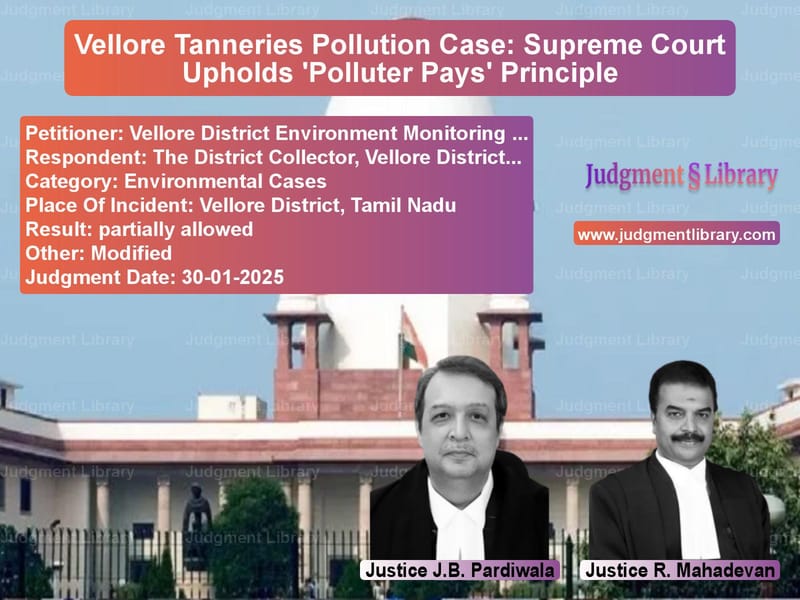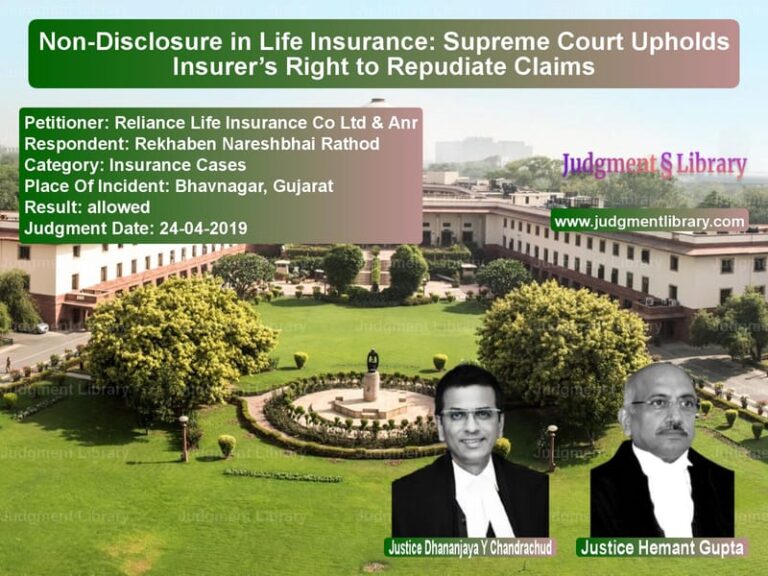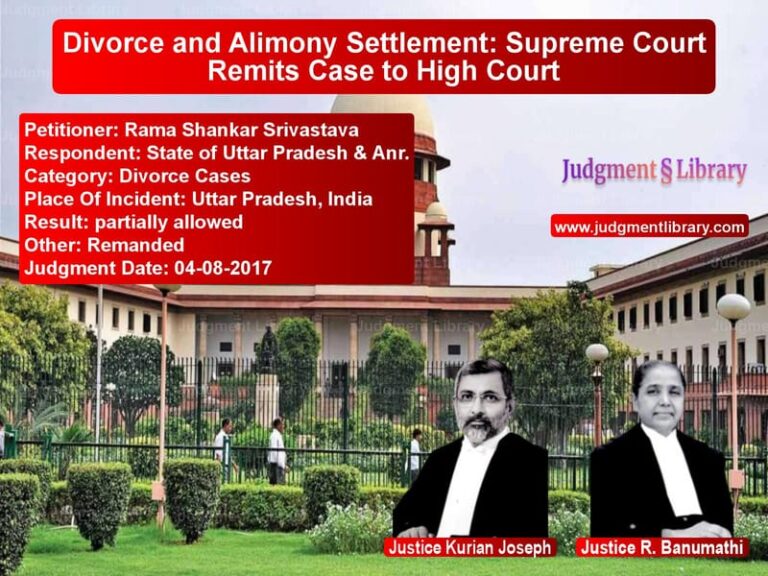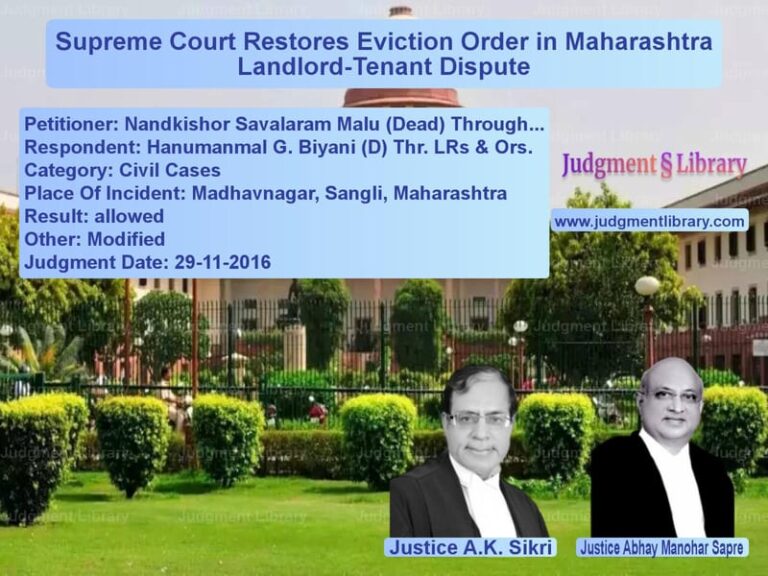Vellore Tanneries Pollution Case: Supreme Court Upholds ‘Polluter Pays’ Principle
The case of Vellore District Environment Monitoring Committee vs. The District Collector, Vellore & Others revolves around the massive environmental damage caused by tannery industries in Tamil Nadu’s Vellore district. The Supreme Court was called upon to determine whether polluters should be held accountable for the contamination of water bodies and agricultural lands and to direct compensation for affected communities.
The ruling reinforces the Polluter Pays Principle and highlights the responsibility of industries and the state in ensuring environmental protection and sustainable industrial development.
Background of the Case
The issue of tannery pollution in Tamil Nadu has been ongoing for decades, with environmentalists and local communities raising concerns about:
- Contamination of the River Palar, the primary water source for Vellore district.
- Degradation of groundwater due to untreated tannery effluents.
- Health hazards for local communities.
- Destruction of agricultural land caused by chemical waste.
Despite multiple interventions by the government and courts, the pollution problem persisted, leading to a fresh plea for stronger enforcement and compensation for affected individuals.
Chronology of Events
- 1996: The Supreme Court first took cognizance of tannery pollution in Vellore and directed industries to adopt Zero Liquid Discharge (ZLD) systems.
- 2001: The Court ordered compensation to affected individuals, but only partial payments were made.
- 2018: Reports revealed continued violations and poor enforcement of environmental safeguards.
- 2022: The Vellore District Environment Monitoring Committee filed a new petition seeking enforcement of previous orders and additional compensation.
- 2025: The Supreme Court issued a landmark ruling strengthening the Polluter Pays principle and directing new measures for environmental restoration.
Petitioners’ Arguments
The petitioners, led by the Vellore District Environment Monitoring Committee, argued that:
- The compensation awarded in 2001 was insufficient and had not been fully disbursed.
- Tannery pollution persisted despite previous court orders.
- Industries had failed to comply with Zero Liquid Discharge (ZLD) requirements.
- Groundwater contamination continued to affect local residents, making agricultural activities unsustainable.
- There was an urgent need for a structured ecological restoration plan funded by the polluting industries.
Respondents’ Arguments
The tannery associations and industry representatives countered these claims, stating that:
- They had invested significantly in environmental safeguards.
- The pollution problem was not solely caused by tannery industries but also by municipal sewage and other industrial effluents.
- Many industries had already implemented the ZLD system.
- The compensation payments were completed as per the 2001 ruling.
- The economic impact of stricter regulations could lead to unemployment and business closures.
Supreme Court’s Analysis
Key Observations
- “The failure to implement Zero Liquid Discharge (ZLD) is a clear violation of the court’s earlier directives.”
- “Industries have a moral and legal obligation to ensure that their activities do not harm the environment.”
- “While economic development is essential, it cannot come at the cost of environmental degradation and human suffering.”
- “The principle of Polluter Pays is not just a legal obligation but a fundamental necessity to ensure sustainability.”
Assessment of Groundwater and Environmental Damage
The Court examined independent environmental reports confirming:
- Continued presence of hazardous chemicals in the River Palar.
- Groundwater contamination beyond permissible limits.
- Destruction of over 5,000 acres of agricultural land.
- Increased incidence of health issues among local residents, including skin diseases and respiratory disorders.
Final Judgment and Directions
The Supreme Court ruled in favor of the petitioners and directed the following measures:
1. Compensation for Affected Communities
- The government must disburse pending compensation to affected individuals within six months.
- Industries responsible for pollution will contribute to an additional ₹500 crore compensation fund.
- Compensation for affected farmers must be reviewed and increased based on updated land damage assessments.
2. Environmental Compliance and Restoration
- All tannery industries must submit compliance reports within three months.
- Industries failing to meet ZLD standards will face penalties, including potential shutdowns.
- The state government must implement ecological restoration projects within one year.
- A new Environment Monitoring Authority will be established to oversee pollution control.
3. Accountability and Oversight
- District collectors and pollution control board officials must submit quarterly reports on pollution levels.
- Failure to comply with the court’s orders will result in contempt proceedings.
- The Central Government must introduce new policies to strengthen industrial waste management.
Implications of the Judgment
This ruling sets a strong precedent for environmental accountability in India. The key takeaways include:
- Reaffirmation of the Polluter Pays Principle: Industries must bear the cost of their environmental impact.
- Strengthened Enforcement: Stricter measures to ensure industries follow environmental norms.
- Protection of Farmers and Residents: Increased compensation for those affected by pollution.
- Government Responsibility: Ensuring proper enforcement of environmental laws.
Conclusion
The Supreme Court’s decision reaffirms the need for sustainable industrial practices and environmental protection. By ensuring stringent enforcement of pollution control measures, the ruling protects the rights of affected communities while balancing economic considerations.
Petitioner Name: Vellore District Environment Monitoring Committee.Respondent Name: The District Collector, Vellore District & Others.Judgment By: Justice J.B. Pardiwala, Justice R. Mahadevan.Place Of Incident: Vellore District, Tamil Nadu.Judgment Date: 30-01-2025.
Don’t miss out on the full details! Download the complete judgment in PDF format below and gain valuable insights instantly!
Download Judgment: vellore-district-env-vs-the-district-collect-supreme-court-of-india-judgment-dated-30-01-2025.pdf
Directly Download Judgment: Directly download this Judgment
See all petitions in Environmental Cases
See all petitions in Judgment by J.B. Pardiwala
See all petitions in Judgment by R. Mahadevan
See all petitions in partially allowed
See all petitions in Modified
See all petitions in supreme court of India judgments January 2025
See all petitions in 2025 judgments
See all posts in Environmental Cases Category
See all allowed petitions in Environmental Cases Category
See all Dismissed petitions in Environmental Cases Category
See all partially allowed petitions in Environmental Cases Category







